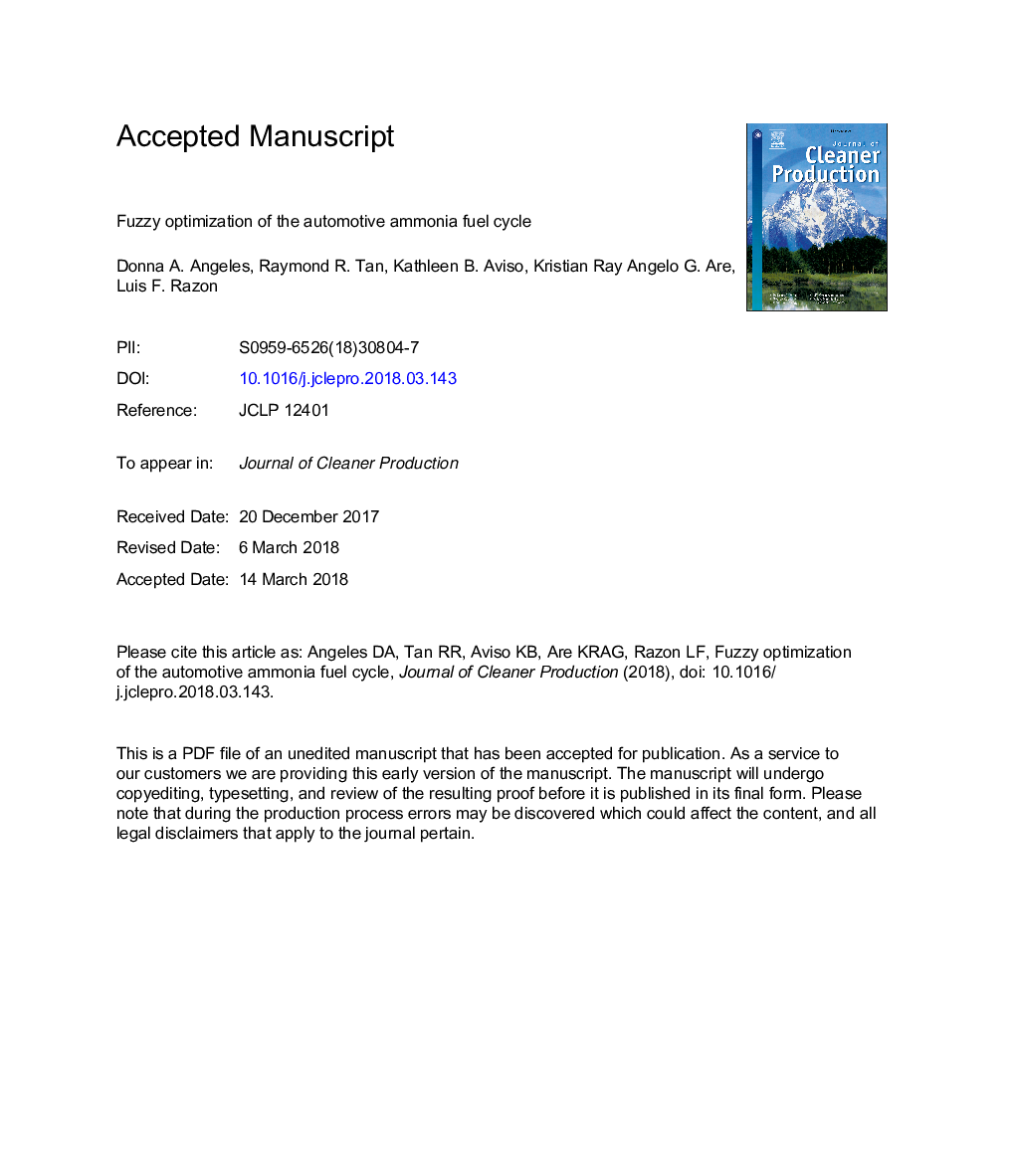| Article ID | Journal | Published Year | Pages | File Type |
|---|---|---|---|---|
| 8096315 | Journal of Cleaner Production | 2018 | 20 Pages |
Abstract
Ammonia has favorable properties for use in automotive fuel applications, such as good storage properties and mature production and distribution infrastructure. However, the sustainability of ammonia as an alternative automotive fuel remains in question, due to the significant environmental impact of conventional production technology and the need for a secondary hydrocarbon fuel to promote combustion when used in internal combustion engines. The two commercially implemented processes for ammonia: steam reforming and partial oxidation, a wood-based syngas process and a cyanobacterial process combined are considered in the life cycle optimization of the ammonia-based fuel system. It is assumed that the functional unit is 1â¯km travelled by a representative light-duty internal combustion engine vehicle. Two conventional fuels are also considered as secondary fuel in this study, namely, gasoline and diesel. Fuzzy linear programming is applied using carbon and nitrogen footprint as environmental objectives. The cyanobacteria-based process combined with gasoline as the secondary fuel was identified as the optimal solution. The most significant parameter was the end-user vehicle fuel economy. Hence, more attention must be given to the improvement of vehicle technology to enable the sustainable use of ammonia for transportation.
Related Topics
Physical Sciences and Engineering
Energy
Renewable Energy, Sustainability and the Environment
Authors
Donna A. Angeles, Raymond R. Tan, Kathleen B. Aviso, Kristian Ray Angelo G. Are, Luis F. Razon,
